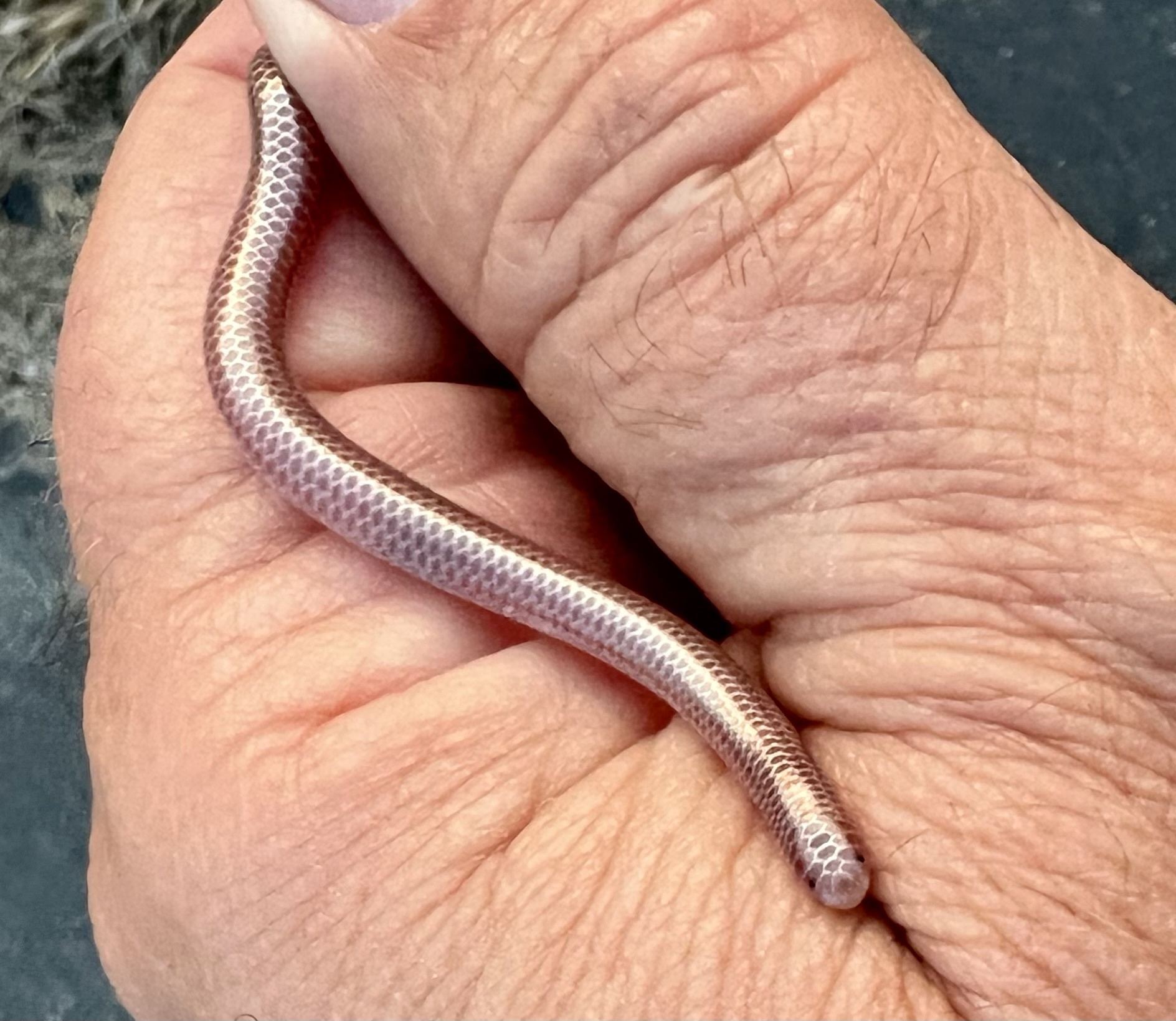
Blind snakes, also known as threadsnakes or worm snakes, are fascinating creatures that belong to the family Typhlopidae. Despite their name, these snakes are not actually blind. While their eyes are extremely small and covered by scales, they still have the ability to detect light and movement. In this article, we will explore 20 interesting facts about western blind snakes. These small, non-venomous reptiles are found in various regions of the Western Hemisphere, including North America, South America, and the Caribbean. From their unique physical characteristics to their behavior and ecological importance, western blind snakes have a lot to offer in terms of intrigue and fascination. So, let’s dive in and discover some captivating facts about these elusive and mysterious creatures!
Key Takeaways:
- The Western blind snake is a tiny, harmless, and fascinating creature that helps keep the balance in its ecosystem by controlling ant and termite populations. It’s like a tiny superhero of the underground world!
- Despite its small size, the Western blind snake plays a big role in maintaining healthy soil ecosystems. It’s like a tiny gardener, aerating the soil and keeping it in tip-top shape for other creatures.
The Western blind snake is a fascinating creature.
The Western blind snake, also known as the Leptotyphlops humilis, is a small, non-venomous snake that belongs to the family Typhlopidae. Despite its name, it is not actually blind, but rather has reduced eyesight due to its subterranean lifestyle.
It is found in the western regions of North America.
The Western blind snake is native to the arid and semi-arid regions of the western United States and parts of northern Mexico. Its range extends from California and Nevada to Texas and Arizona.
It has a unique burrowing behavior.
The Western blind snake spends most of its life underground, burrowing through loose soil and leaf litter. It uses its pointed snout and specialized scales to navigate through the soil and find small insects and invertebrates to feed on.
It is quite small in size.
The Western blind snake is typically only around 4-8 inches in length, making it one of the smallest snake species in North America. Its slender body allows it to move easily through narrow soil cracks and crevices.
It has a cylindrical body shape.
The Western blind snake has a cylindrical body with smooth scales, which enable it to move smoothly through the soil. Its body is typically brown or pinkish-brown in color, helping it blend in with its subterranean environment.
It feeds primarily on ant and termite larvae.
The diet of the Western blind snake consists mainly of ant and termite larvae. Its specialized jaws and teeth are adapted for consuming soft-bodied prey that it finds while burrowing underground.
It has a unique reproductive strategy.
The Western blind snake is capable of parthenogenesis, a form of asexual reproduction in which females can produce offspring without the need for fertilization. This allows for rapid population growth and colonization of new areas.
It is a harmless snake.
The Western blind snake is completely harmless to humans and other larger animals. It does not possess venom or fangs, and its small size and non-aggressive nature make it a docile and non-threatening species.
It has adapted to survive in extreme environmental conditions.
The Western blind snake is well-adapted to survive in arid and harsh desert conditions. Its ability to burrow underground helps it avoid extreme temperatures and dehydration, enabling it to thrive in its natural habitat.
It plays an important role in ecosystem balance.
The Western blind snake contributes to ecosystem balance by controlling populations of ant and termite larvae, which can sometimes become pests. By feeding on these larvae, it helps in regulating their numbers and maintaining ecological harmony.
It has a limited ability to detect vibrations.
While the Western blind snake has reduced eyesight, it compensates by having special sensory cells in its skin that can detect vibrations. This allows it to sense the movement of prey or potential predators nearby.
It can emit a musky odor as a defense mechanism.
In times of threat, the Western blind snake can release a musky odor from specialized glands located near its tail. This scent acts as a deterrent to predators and helps to protect the snake from harm.
It has a unique way of shedding its skin.
The Western blind snake sheds its skin in a unique manner by rubbing against rough surfaces or using its snout to push against the soil. This process helps to remove the old skin and promote the growth of new skin.
It is primarily active at night.
The Western blind snake is nocturnal, which means it is most active during the nighttime hours. This behavior allows it to avoid extreme temperatures and potential predators that are more active during the day.
It has a lifespan of around 2-4 years.
The Western blind snake has a relatively short lifespan, typically ranging from 2 to 4 years. However, its rapid reproduction and ability to colonize new areas help sustain its population in its native habitat.
It is often mistaken for an earthworm.
Due to its small size and similar appearance, the Western blind snake is often mistaken for an earthworm. However, upon closer inspection, its cylindrical body, scales, and unique head structure can help differentiate it from a worm.
It faces some threats in its natural habitat.
The Western blind snake faces threats such as habitat loss due to urbanization, agriculture, and human development. Additionally, its subterranean lifestyle makes it vulnerable to disturbances and destruction of its underground burrows.
It has a limited ability to swim.
Although the Western blind snake is primarily a burrowing species, it does have a limited ability to swim. It can propel itself through water using a serpentine motion, but it prefers to stay on land whenever possible.
It has a secretive and cryptic behavior.
The Western blind snake has a secretive nature, often remaining hidden beneath the soil or leaf litter. This behavior helps it avoid predators and increases its chances of successfully finding food and reproducing.
It serves as an indicator of soil health.
The presence of Western blind snakes in an ecosystem indicates a healthy soil ecosystem. As burrowing reptiles, they play a vital role in soil aeration and nutrient cycling, benefiting other organisms in the ecosystem.
Conclusion
Now that you know these 20 fascinating facts about Western Blind Snakes, you have gained a deeper understanding of this unique species. From their tiny size and scale-less bodies to their diet of ants and termites, blind snakes are remarkable creatures with intriguing adaptations. They may not be the most well-known animals, but their importance in the ecosystem cannot be underestimated.
Western blind snakes play a crucial role in controlling pest populations, making them invaluable allies to humans. Their ability to burrow underground and navigate through soil effortlessly is truly remarkable. As secretive and elusive animals, they continue to fascinate researchers and nature enthusiasts alike.
So, the next time you stumble upon a Western Blind Snake, take a moment to appreciate their beauty and significance. These remarkable creatures are a testament to the endless wonders of the animal kingdom.
FAQs
Q: How big do Western Blind Snakes grow?
A: Western Blind Snakes are small creatures, usually reaching a maximum length of around 10 inches.
Q: Are Western Blind Snakes venomous?
A: No, Western Blind Snakes are not venomous. They are harmless to humans and other animals.
Q: What do Western Blind Snakes eat?
A: Western Blind Snakes primarily feed on ants and termites. They have a specialized diet and are highly adapted to consuming these tiny insects.
Q: Where do Western Blind Snakes live?
A: Western Blind Snakes are typically found in dry regions of Western North America, such as California, Nevada, and Arizona. They prefer areas with loose soil, where they can burrow easily.
Q: Are Western Blind Snakes blind?
A: Despite their name, Western Blind Snakes are not completely blind. They have small, poorly developed eyes, but they primarily rely on their sense of touch and smell to navigate their environment.
Q: Can Western Blind Snakes bite humans?
A: While Western Blind Snakes technically have the ability to bite, they are harmless and rarely bite humans unless they feel threatened or cornered. Their bites are painless and pose no danger.
Was this page helpful?
Our commitment to delivering trustworthy and engaging content is at the heart of what we do. Each fact on our site is contributed by real users like you, bringing a wealth of diverse insights and information. To ensure the highest standards of accuracy and reliability, our dedicated editors meticulously review each submission. This process guarantees that the facts we share are not only fascinating but also credible. Trust in our commitment to quality and authenticity as you explore and learn with us.


